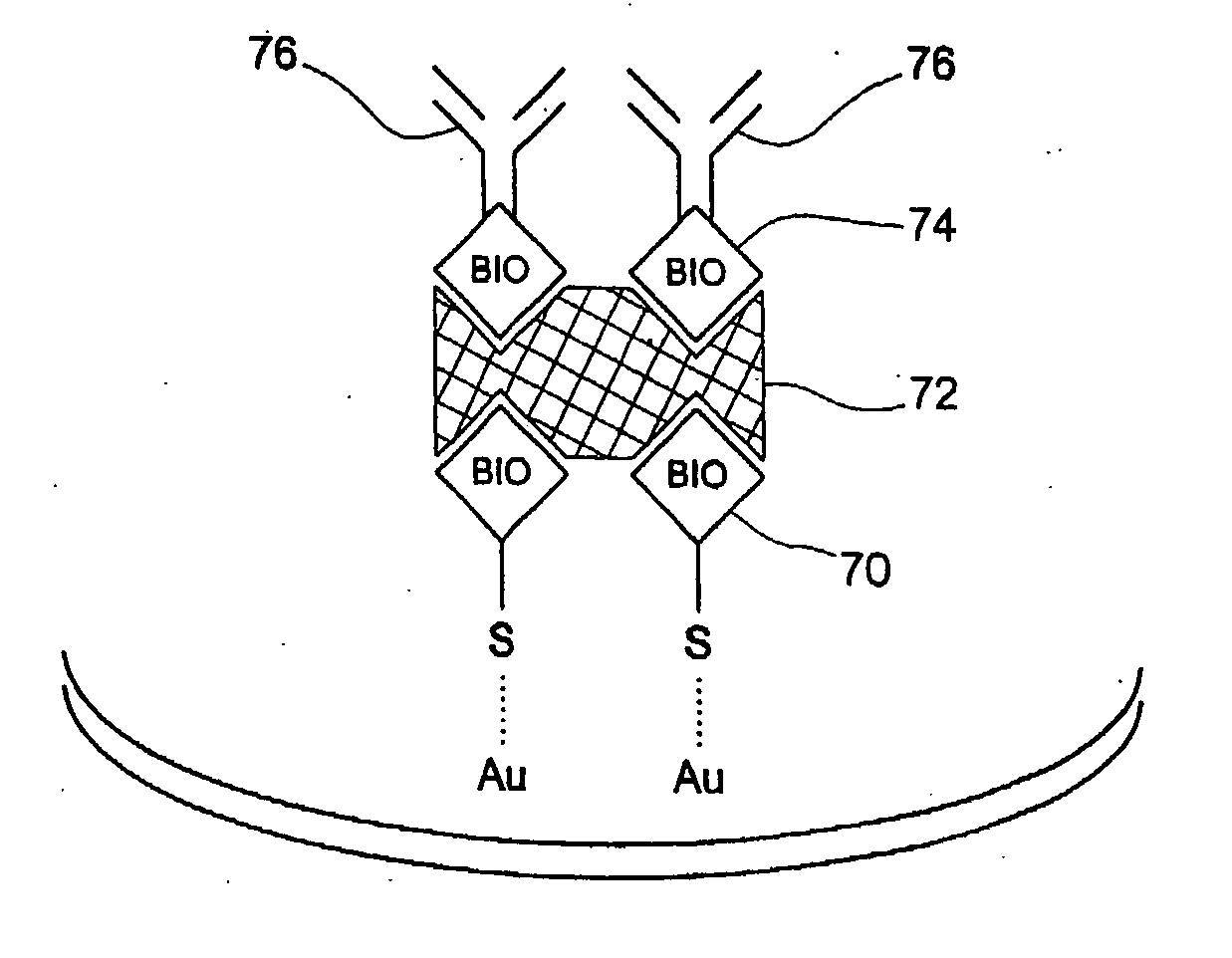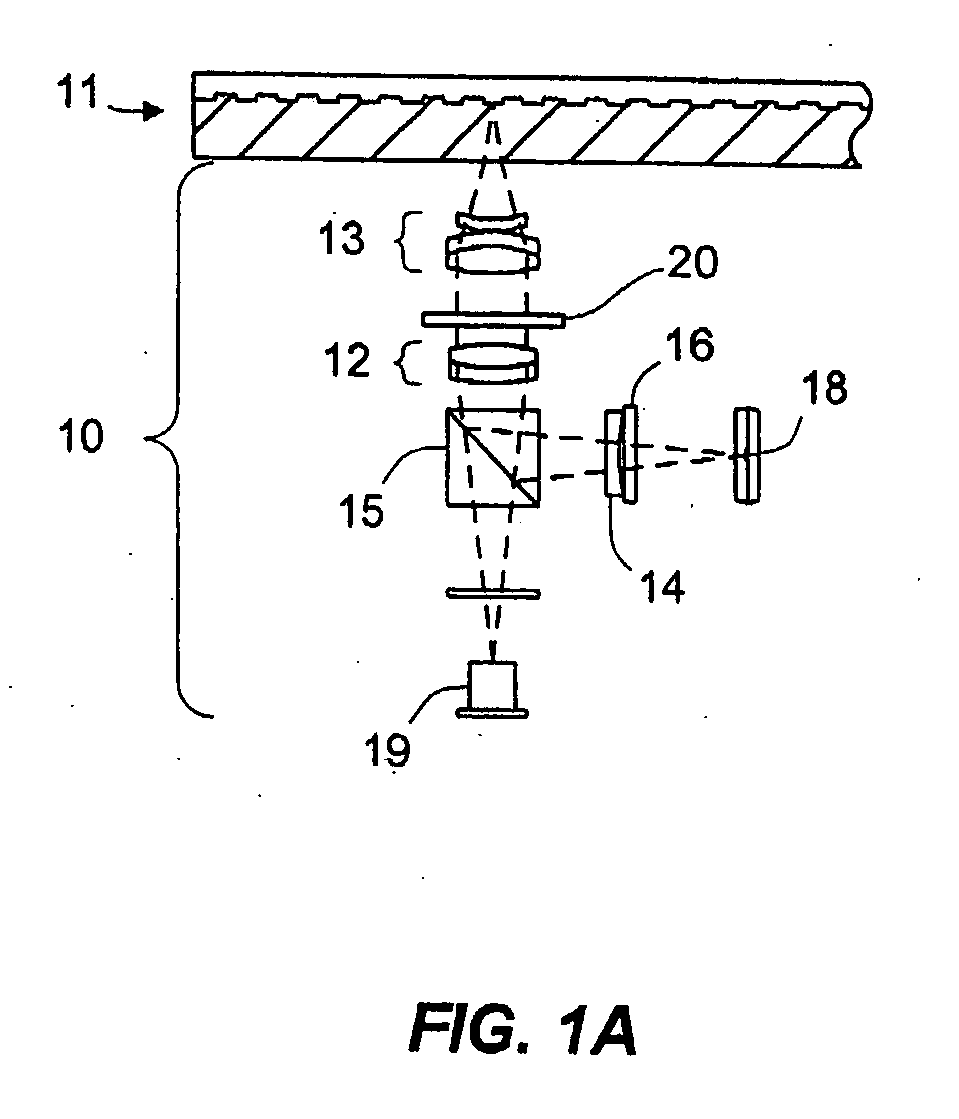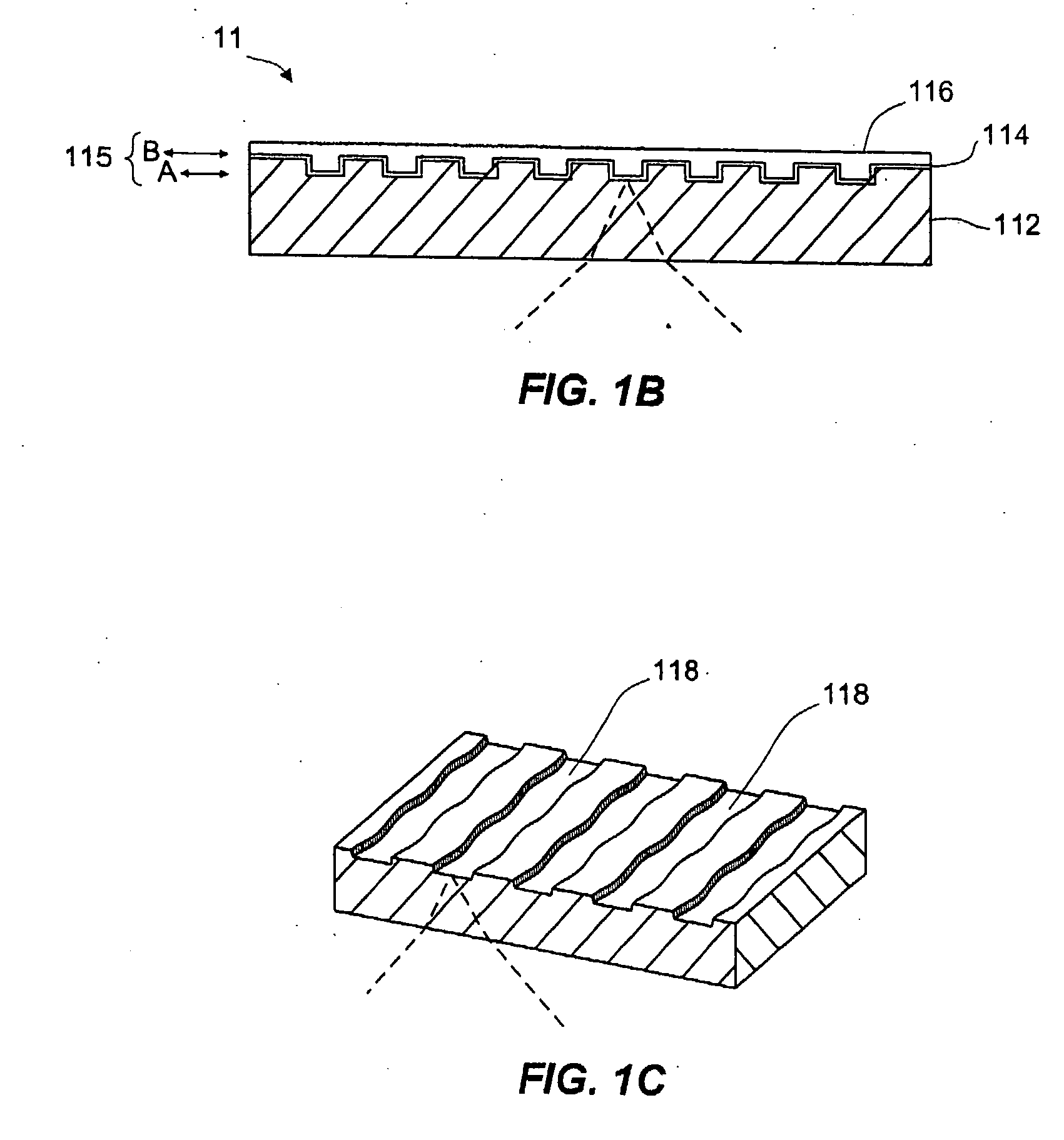Trackable optical discs with concurrently readable analyte material
a technology of optical discs and analyte materials, applied in the field of optical disc design and manufacture, can solve the problems of affecting the correct affecting the accuracy of the operation of the reader, and the provision of data, so as to facilitate the centering of non-operational problems
- Summary
- Abstract
- Description
- Claims
- Application Information
AI Technical Summary
Benefits of technology
Problems solved by technology
Method used
Image
Examples
example 1
Manufacture of a Trackable, Forward Image Positive Relief Inverted Optical Disc Suitable for Analyte-Specific Assay
[0288] An unpunched father part containing an image of a CD-R format wobble groove, manufactured by Cinram (Anaheim, Calif.), was matrixed to form a CD-R mother part by standard procedures. Briefly, the electroforming was performed in a nickel sulfamate bath in an electroforming system manufactured by Digital Matrix, Inc. (Hempstead, N.Y.).
[0289] The mother part was cleaned, polished and punched, then used directly as a stamper to manufacture inverted discs having a forward image spiral groove with operational structures in positive relief. A NETSTAL molding machine, manufactured by Netstal Machinery Ltd. (Naefels, Switzerland), and a CD-R mold created by AWM, of Switzerland were used to generate the discs at EXIMPO S.R.O. (Prague, Czech Republic). The molding parameters of the injection molding machine were adjusted to facilitate high venting in the mold, to accurate...
example 2
Construction of an IgG-Specific Immunoassay Site on a Trackable Optical Disc
[0292] A single data layer, first surface, forward image / positive relief wobble disc was manufactured according to Example 1. The gold surface of the disc was then derivatized as follows to construct an assay site specific for and capable of detecting human IgG in a blood sample.
[0293] An aliquot of 2 mg of N-[6-(biotinamido)hexyl]-3′-(2′-pyridyldithio)propionamide (“Biotin-HPDP”) (Pierce, Rockford, Ill.; lot number 97032461) was dissolved in 2 ml of dimethylformamide. Onto each of four intended assay sites, each located at the same radius from the center of the disc, 10 μl of biotin-HPDP solution was pipetted. The disc was incubated for 2 hours at room temperature, and then washed with 50 mM phosphate buffer (pH 7).
[0294] Next, 10 μl of streptavidin solution (Monobind, Costa Mesa, Calif.; Lot 96-001 / MF; 2 mg / ml) was pipetted onto the same assay spots. The disc was incubated one hour at RT, and then washe...
example 3
Electronic Detection and Characterization of Human Erythrocytes on an RBC-Specific Trackable Immunoassay Optical Disc
[0303] A single data layer, first surface, forward image / positive relief wobble disc was manufactured according to Example 1. The gold surface of the disc Was then derivatized as follows.
[0304] An aliquot of 2 mg of N-[6(biotinamido)hexyl]-3′
[0305] t-(2′-Pyridyldithio)propionamide (“Biotin-HPDP”) (Pierce, Rockford, Ill., lot number 97033461) was dissolved in 2 ml of dimethylformamide. Onto each of four intended assay sites, each located at the same radius from the center of the disc, 10 μl of biotin-HPDP solution was pipetted. The disc was incubated for 2 hours at room temperature, and then washed with 50 mM phosphate buffer (pH 7).
[0306] Next, 10 μl of streptavidin solution (Monobind, Costa Mesa, Calif., Lot 96-001 / MF; 2 mg / ml) was pipetted onto the same assay spots. The disc was incubated one hour at RT, and then washed with 50 mM phosphate buffer.
[0307] Monoclo...
PUM
| Property | Measurement | Unit |
|---|---|---|
| depth | aaaaa | aaaaa |
| groove depth | aaaaa | aaaaa |
| groove depth | aaaaa | aaaaa |
Abstract
Description
Claims
Application Information
 Login to View More
Login to View More - R&D
- Intellectual Property
- Life Sciences
- Materials
- Tech Scout
- Unparalleled Data Quality
- Higher Quality Content
- 60% Fewer Hallucinations
Browse by: Latest US Patents, China's latest patents, Technical Efficacy Thesaurus, Application Domain, Technology Topic, Popular Technical Reports.
© 2025 PatSnap. All rights reserved.Legal|Privacy policy|Modern Slavery Act Transparency Statement|Sitemap|About US| Contact US: help@patsnap.com



